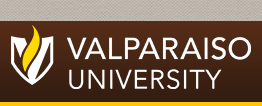Document Type
Peer-Review Article
Abstract
Thirty-five native and exotic Viburnum taxa were evaluated in a series of no-choice (NC) and multiple-choice (MC) laboratory feeding bioassays, and field defoliation studies for their relative susceptibility, palatability, and preference for viburnum leaf beetle (VLB) (Pyrrhalta viburni Paykull) larvae and adults. Overall, larval field defoliation was consistent with adult field defoliation, and adult VLB field defoliation mirrored the results from the NC laboratory feeding studies. Collectively, there was no significant difference in field defoliation between Asian and North American Viburnum taxa but leaf thickness was a good predictor for both the percent leaf tissue removed in NC laboratory feeding bioassays and field defoliation of Asian Viburnum taxa but not for North American taxa. The amount of leaf tissue removed in the NC laboratory feeding bioassays was related to leaf thickness, but not for larval and adult field defoliation. Field defoliation was not related to the MC laboratory feeding preference bioassays, leaf thickness, lignin content or upper and lower leaf trichome density. Leaf chemical analysis for less to highly susceptible Viburnum taxa revealed the presence of chlorogenic acid (CGA). Viburnum rafinesquianum, V. opulus, V. sargentii, V. sargentii ‘Flavum’, and V. prunifolium were more closely associated chemically and were more highly preferred; exceptions being V. sargentii, and V. sargentii ‘Flavum’ compared with V. bitcshiuense, V. burejaeticum, and V. mongolica which had higher levels of CGA, but were the least susceptible to feeding in both the field defoliation survey, and NC laboratory feeding bioassays. Overall, the amount of leaf tissue removed in the NC and MC laboratory feeding bioassays, and field defoliation was not related to either upper or lower leaf trichome density, but upper and lower trichome density was strongly consistent within individual taxa. Collectively, trichome density, leaf thickness, and CGA levels do not appear to affect the susceptibility of Viburnum taxa for feeding by the VLB. There appears to be a large pool of Asian Viburnum taxa available for future plant breeding programs.
Recommended Citation
Miller, Fredric and Rigsby, Chad
2024.
"Host plant resistance of Viburnum taxa for the viburnum leaf beetle (Coleoptera: Chrysomelidae),"
The Great Lakes Entomologist, vol 57
(2)
DOI: https://doi.org/10.22543/0090-0222.2490
Available at:
https://scholar.valpo.edu/tgle/vol57/iss2/9

